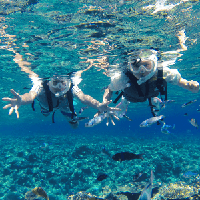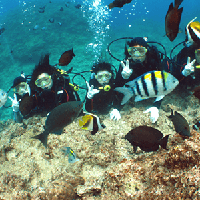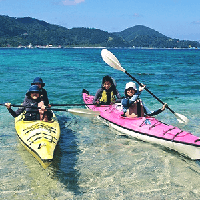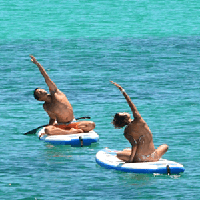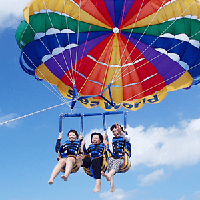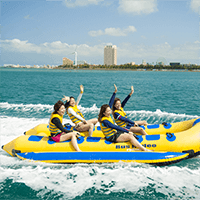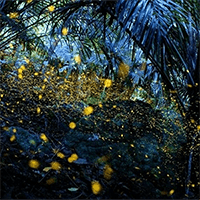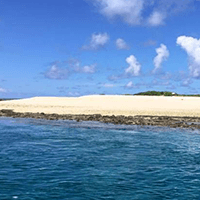Tokyo Reservation for Eco-tourism | Activity Japan
- Age 3~Age 60
- 2~3 hours
- 08:45 / 13:15
We will hold a tour to capture six kinds of dragonfly nymphs. Travel by electric bicycle, time limit is 2 hours + 30 minutes of explanation, with explanation of how to raise dragonflies and dragonflies. 1. Black dragonfly nymph capture rate 100% 2. Blue dragonfly nymph capture rate 50% 3. Ancient dragonfly nymph capture rate 30% 4. Dragonfly nymph capture rate 20%. Capturers will receive a dragonfly brooch (worth 1000 yen) 5. Common dragonfly nymph capture rate 10%. Capturers will receive a capture bucket + bubble set (worth 1500 yen) 6. Silver dragonfly nymph capture rate 3%. Capture rate is 3 out of 100 times. Capturers will receive a net + bucket + bubble (worth 3000 yen). What you need to bring: Marine shoes (from the end of March to October), hat, drink, plastic case for taking things home, bubble tea, marine shoes from spring to autumn, what we will prepare: rubber boots (from November to mid-March), net, storage bucket, nymph guide, information materials We look forward to your participation. Nogawa Nature School Sonoda (Tosshi)
- Age 3~Age 60
- 2~3 hours
- 09:15 / 12:30
We will be holding a river creature exploration for parents and children, so we look forward to your participation. On the day, please gather at the meeting place, rent waders (30 sets in stock, free of charge, from 15cm to 28cm), put on gloves, turn over stones, and catch fish and crayfish. Please bring a marine scrub, as it is required from spring, the end of March to autumn and the end of October. During the cold water period from winter to spring, they do not move, so you can catch them with your bare hands. The main targets for capture are turtles, frogs, catfish, mitten crabs, striped shrimp, Yamato swamp shrimp, American crayfish, Ukigoi, Chichibu, loach, Moroko, Motsugo, Japanese river snail, Taiwanese clam, dragonfly nymph, and river insects. Many creatures live behind the stones and many hide underneath, so turn over a lot of stones to see them. It is easier to catch them in the winter observation session. We look forward to your participation and application. If you want to take some fish home, please bring a plastic case and a bubbler (battery-operated, only the fish need oxygen). There are many paid parking lots at the meeting point. They are located in and around the market. We will meet 10 minutes before the meeting point on the day and move there. If you are late due to traffic congestion, you will not be able to participate. In that case, we can arrange an afternoon session or reschedule, so please contact us. Thank you very much. Depending on the circumstances, the instructor may be Tosshi, Ryo, or Sora. What to bring: Marine shoes, change of clothes, swimsuit, spats, rash guard, drink, rucksack, plastic case for taking fish home, bubbler What to prepare on our side: Stupid boots (from November to mid-March), net, storage bucket We look forward to your participation.
子どもと初めて参加しましたが、ガイドさんが丁寧に生き物の取り方や飼い方を教えてくださったおかげで、とても楽しい時間を過ごすことができました! 帰り際にはカブト虫やお菓子などのお土産もくださり、子どもたちも大満足でした!! これからもガイドさんが提供してくださる素敵な冒険を楽しみにしています☆
- Age 0~Age 60
- 2~3 hours
- 09:00 / 13:00
Experience river exploration, catch targets include river crabs, Japanese loaches, crayfish, shrimp, fish, dragonfly nymphs, tadpoles, turtles, etc. The tour is held twice, from 9:00 am to 11:30 am and from 1:00 pm to 3:30 pm. We look forward to your reservation. The tour is 2.5 hours in total. On the day, we will travel by bicycle, enter the river, and experience exploration. The first half is about 2 hours, mainly observing creatures in the spring or upstream, and the second half is searching for creatures and exploring in the upstream river. We will explain how to observe at the beginning and the creatures at the end. About 30 minutes P.S.: Waders and foolish boots can be rented for free from autumn to spring. What to bring: Marine shoes, change of clothes, swimsuit, spats, rash guard, drink, rucksack, plastic case for taking things home, bubble What to prepare on your side: foolish boots (from November to mid-March), net, storage bucket
5歳の子どもと家族3人で参加しました。 暑い日でしたが、川の水が冷たくて気持ちよく、ザリガニや魚などの生き物を捕まえました。 他の人が捕まえた生き物を見せてもらったり、楽しい時間を過ごすことができました。 子どもは、生き物に触れたり、川に浸かったり、とても楽しかった様子です。 川遊び出来るような場所が身近にないため、申し込んで良かったです。
- Age 3~Age 60
- 5~6 hours
- 07:00 / 13:00 / 18:00
This is a 5-hour Nature Tour plan for Chofu City, Fuchu City, Kokubunji City, and the surrounding area! If you are a family member, you can apply for up to 10 people. If you are a family member, friends, children and grandparents, uncles, and relatives can also participate. How about celebrating your child's birthday or entering school? MENU can be customized ♪ MENU example: Carp fishing in the Nogawa River from 7am, lure fishing in the Tama River 9am looking for stag beetles in the mountains, looking for beetle larvae from 10am to 12pm Rustling tour looking for river fish, lizards, and crayfish from 1pm Search for river crabs, loaches, red-bellied newts, and turtles in the upper reaches. Rustling tour from 3:00 p.m. Search for insects in the mountains (held from June to mid-September) From 16:00. While eating roasted sweet potatoes, there will be lectures, how to keep them, information about living creatures & QUIZ competition from 18:00. Information session on catching insects from 18:30 to 21:00 Insect catching (moving from 3 to 4 points) PS: On a midsummer night, walking for more than 2 hours, hiking in the mountains may be difficult for the elderly Saturdays, Sundays, and holidays, Can be held any time on weekdays. We will use this car (minivan) for transportation.
祖父母と一緒でしたので、車で送迎プランを予約しました。 その時々の状況に応じてプランを柔軟に変更してくださり、たくさんの知識も教えてもらって子供たちの最高の夏の思い出になりました! クワガタもびっくりするほど沢山取れて、大人の私たちが驚きました。 また是非機会があればお願いしたいです。ありがとうございます!
- Age 3~Age 70
- 2~3 hours
- 09:00 / 11:30 / 14:00 / 16:30
Held from spring to autumn Fishing for Japanese eels in the brackish waters of rivers Part 1: 8:00-10:30 Part 2: 10:30-13:00 Part 3: 13:30-16:00 Part 4: 16:00-18:30 This is a tour to fish for eels at the mouths of rivers that run through Tokyo. Japanese eels are born in the western waters of the Mariana Islands. They grow in rivers not only in Japan but also in East Asia, including China, Taiwan, and the Korean Peninsula, and are known to return to the Mariana Islands to spawn. Japanese eels (Anguilla japonica), which belong to the Anguilla genus of the eel family, are widely distributed in East Asia, including Japan, China, Taiwan, and Korea. In Japan, they mainly live south of Honshu, but there have been cases of them being caught in Hokkaido. Rental tackle, fishing rod, and equipment are included, so you can participate empty-handed. Two patterns of fishing will be done: casting fishing and plastic bottle tackle fishing, using earthworms as bait. While waiting for the tackle, you can fish for goby at your feet. The main target is eels, but sometimes you can also catch goby, crabs, and seigo. The tour lasts about 3 hours. Please bring a headlamp, a handy light, and drinks. *If you want to take the fish home, please bring an aeration device (battery-powered bubbler) to prevent oxygen deficiency, a plastic case or fishing bucket to prevent escape, and a cooler box. By train: 15 minutes walk from JR Joban Line or Tokyo Metro Chiyoda Line By car: Please use a nearby parking lot Meeting place: Near the Seven-Eleven Katsushika Kosuge 1-chome store. We will send you a map in advance, so please walk to the point. Migration of Japanese eels Japanese eels spawn in the summer in the waters west of the Mariana Islands in the Pacific Ocean. After hatching, they become willow-leaf-shaped larvae called leptocephalus. Glass eels are carried by ocean currents and reach East Asia in about six months, then transform into long, cylindrical glass eels and ride the high tide into rivers. After that, their transparent bodies start to take on color, and they are called yellow eels. During the yellow eel stage, eels grow large, and eat a variety of foods, including shrimp, crabs, small fish, and insects. The environment in which Japanese eels spend their growth period is wide, from coastal areas to the upper reaches of rivers, and includes not only freshwater areas but also brackish water and seawater. After several years to a dozen years, when they grow to a size of about 40 cm or more for males and about 50 cm or more for females, they begin to mature and are called silver eels. Silver eels leave their familiar rivers and coastal areas and travel to spawning grounds from autumn to winter. They reach the spawning grounds in the Marianas in about six months, spawn, and then end their life. PS: The minimum number of participants is 5 or more.
- Age 0~Age 60
- 2~3 hours
- 09:00 / 13:00
Grilled sweet potato set, rental of foolish boots, river scavenging experience tour, with hot spring (adults only) A warm outdoor nature experience tour held in winter! Making sweet potatoes + river scavenging + hot spring tour (adults only, children are charged, 1 hour ticket) First, make sweet potatoes in a special pot, grill Beni Haruka on low heat for 3 hours, then combine with foolish boots and go on a river scavenging tour. Targets for capture are fish: Oikawa, Motsugo, Moroko, Chichibu, Yoshinobori, Ukigori, 3 types of loach, black killifish, carp crab: Mitten crab After the crayfish schedule, there is an explanation session on living creatures, and there are also effects of global warming and invasive species. Once it is over, move to Yumori no Sato and relax in the hot spring. There is also a restaurant on site and a free shuttle bus, so you can get to Chofu and Musashisakai for free. What to bring: Marine shoes (from the end of March to October), swimsuit, rash guard, spats, drinks, hat, backpack, plastic case for taking things home + Bukubuku (battery-powered oxygen supply device) What to prepare on your side: Electric bicycle, helmet, rubber boots (from November to mid-March), net, storage bucket The meeting place is the free parking lot at Fukadai Nigiwai no Sato, a 50-car coin parking lot, with changing rooms, toilets, and vending machines. We look forward to your participation.
- Age 0~Age 100
- 2~3 hours
- 08:30 / 13:00
Let's go to the sea of Ogasawara in winter to observe the dynamic whale!
- Age 0~Age 100
- 2~3 hours
- 09:00 / 13:00
Touch the mystery of the evolution of the flora and fauna of Ogasawara! The course can be set according to the customer's request. half-day tour, so you're free to spend the rest of your time.
最近チェックしたプラン
Please wait a moment
![[Tokyo/Chofu] *Family-friendly * From 9:00 AM, 13:00 PM - 6 types of dragonfly hunting tour (free rental of electric bicycle stupid boots with front and rear child seats)の画像](https://img.activityjapan.com/10/48727/10000004872701_atFOJjl6_3.png?version=1708931523)
![[Tokyo/Chofu] 9:00 AM, 13:00 PM - Lower to middle reaches * For families * Exploration to find creatures, observe frogs, turtles, fish, aquatic insects, wild birds, etc. (free rental of stupid boots)の画像](https://img.activityjapan.com/10/47343/10000004734301_atFOJjl6_3.png?version=1708931882)
![[Tokyo, Chofu] 9AM, 1PM - Mainly in the upstream area, family-friendly ♪ Spring water exploration! Animal collecting experience tour (free silly boots & electric bicycle transportation)の画像](https://img.activityjapan.com/10/46557/10000004655701_atFOJjl6_3.jpeg?version=1708932242)
![[Tokyo/Chofu] *For families* Summer vacation special. 5-hour private tour, free combination, nature experience with family, friends, children, grandchildren *の画像](https://img.activityjapan.com/10/53031/10000005303101_V9QH9Mvy_3.JPG?version=1709015473)
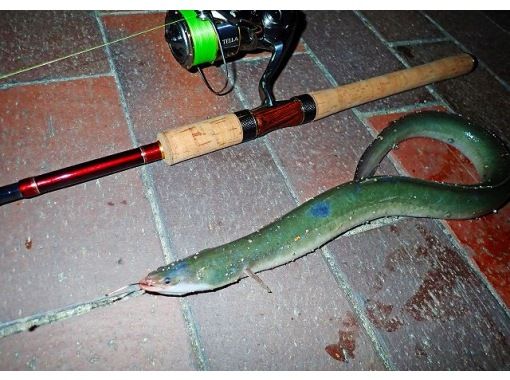
![[Tokyo/Chofu] 9:00 AM, 13:00 PM - *Family friendly* Winter nature experience, roasted sweet potato making experience + adult* Hot spring included! Children *River rustling tourの画像](https://img.activityjapan.com/10/51029/10000005102901_atFOJjl6_3.jpg?version=1713911643)
![[half-day Whale watching tour] Let's see whales in the sea of Ogasawara! [Winter only] (half-day tour)の画像](https://img.activityjapan.com/10/2958/10000000295801_mCr83CUP_3.jpg?version=1728709742)
![[half-day Moriyama walking tour] Feel free to fully enjoy the nature of Ogasawara! A leisurely mountain walk experience (half-day course)の画像](https://img.activityjapan.com/10/2955/10000000295501_WPQUFcRo_3.jpg?version=1590126235)
